We participate in a program called “Edge-of-Field Monitoring.” It’s a program that’s sponsored by a partnership of the Mississippi River Basin Initiative and the Natural Resources Conservation Service[1]. What we do in this program is test the water flowing out of our field tiles once a week to see how much nitrogen and phosphorous is in the water.
We apply nitrogen and phosphorous fertilizers to the fields, they’re essential nutrients for plant growth. These fertilizers are expensive, so naturally we want them to stay on the fields and not run down the creek.
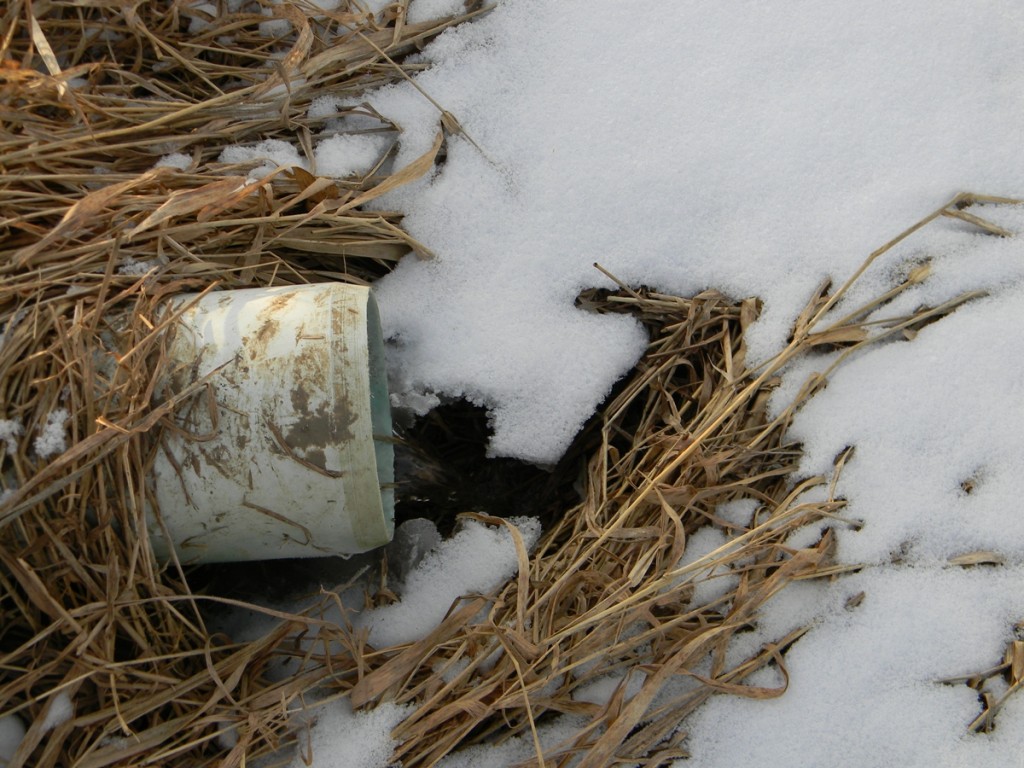
The field tiles hadn’t drained water since about last June, but when we got over an inch of rain a couple weeks ago the tiles finally started running. The picture above is a tile that drains into this creek by my house.

This little creek eventually ends up flowing into the Mississippi River. The sediment that runoffs from farm fields contributes to the hypoxia zone in the Gulf of Mexico. The fertilizer in the sediment causes algae to grow which creates low-oxygen areas in the ocean and drives off the fish and other aquatic life.
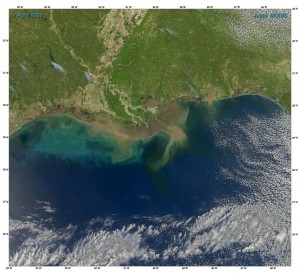
So beyond our own selfish interest in not wanting our expensive fertilizer to run away, we also don’t want to contribute to polluting the ocean. By monitoring what comes out of our tile drains we hope to learn what farming practices we can use to keep our fertilizer on our fields and out of the Gulf of Mexico.
Owen and Spenser, being Good Dogs, are also very concerned about the water quality in the creek.
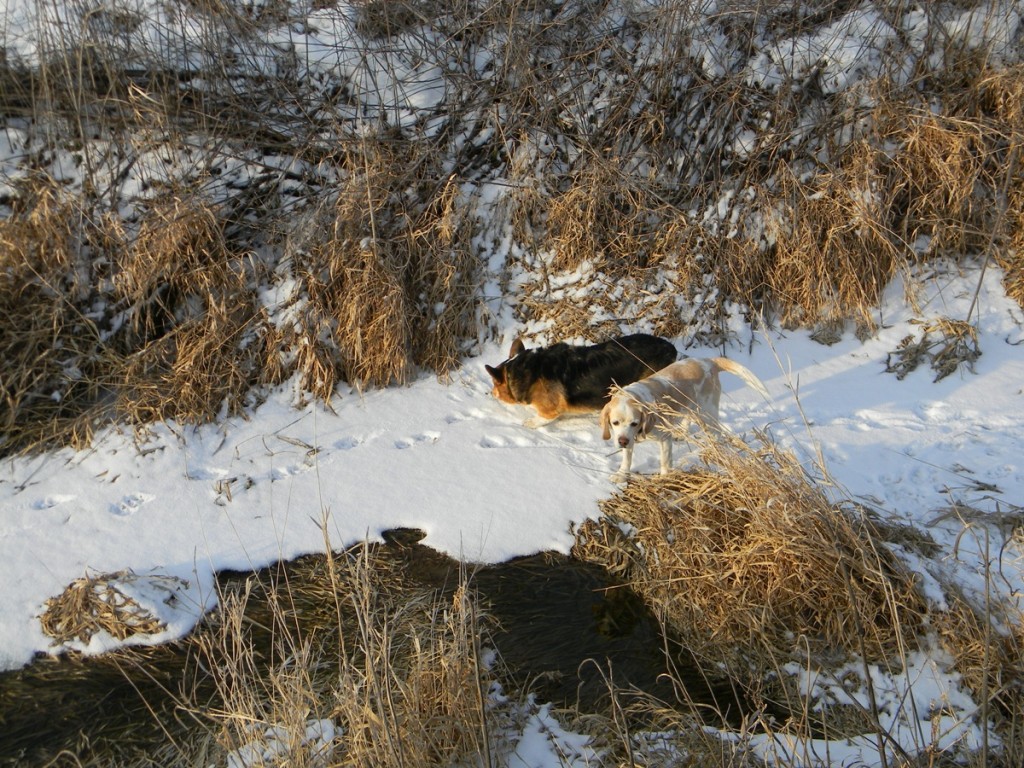
To test the water I catch a sample with my soon-to-be patented water sampler.
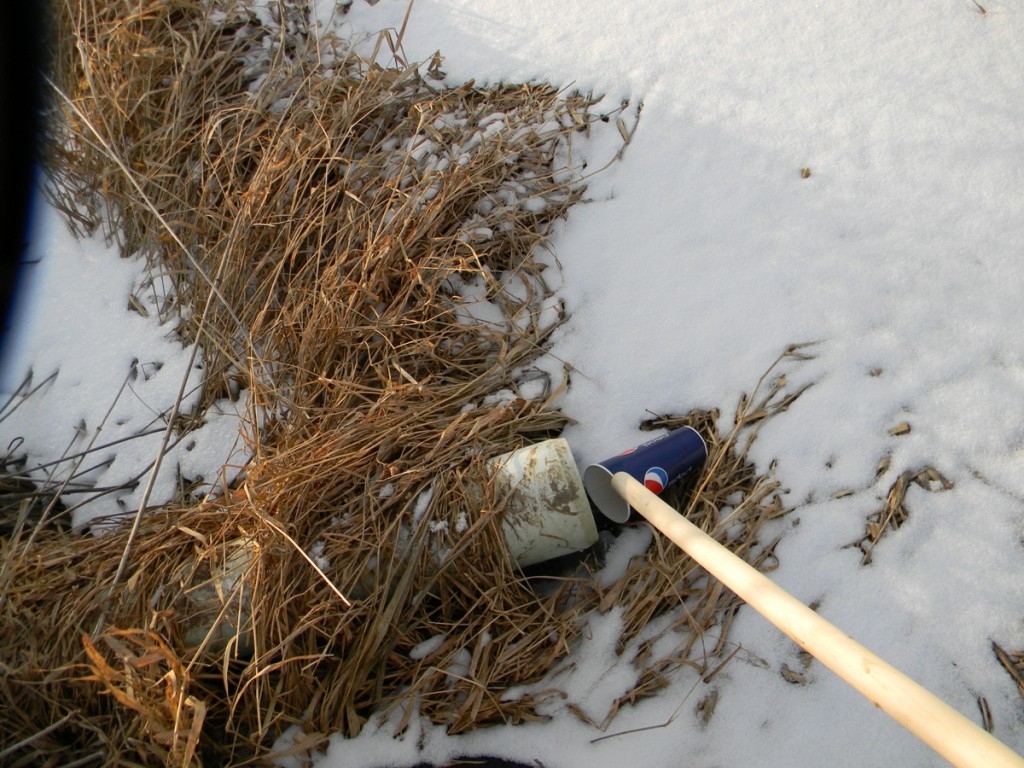
Nailing a paper cup to a stick may seem a little ridiculous, but after you’ve fallen in the creek a few times trying to stretch to reach the tile, you’ll recognize it for the wonder tool it is.
After gathering the sample I head home to test it.
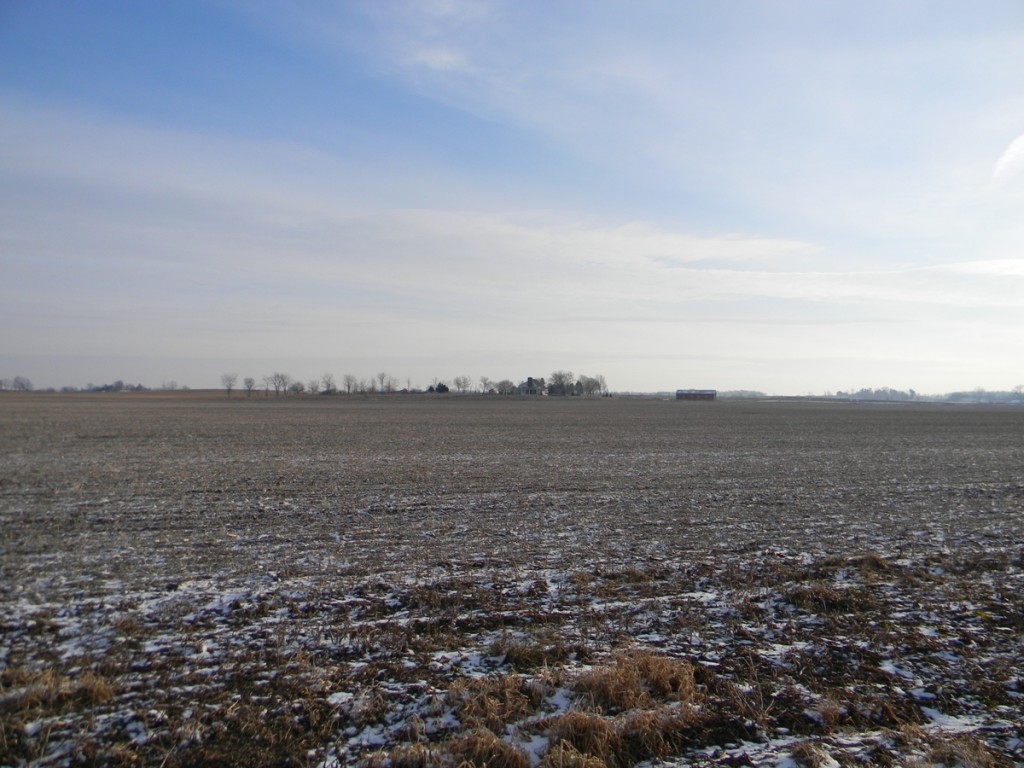
Usually I carry the test kit with me, but with the wind chill in the low teens it’s not all that much fun to take your gloves off and fiddle with beakers and test strips outside. I could drive to the creek too, but the Wonder Dogs and I all needed the exercise.
Here’s the test kit I use.

It has two tests, one for nitrogen and one for phosphorous. The nitrogen test is just a test strip you dunk in the water sample and compare to a reference strip.
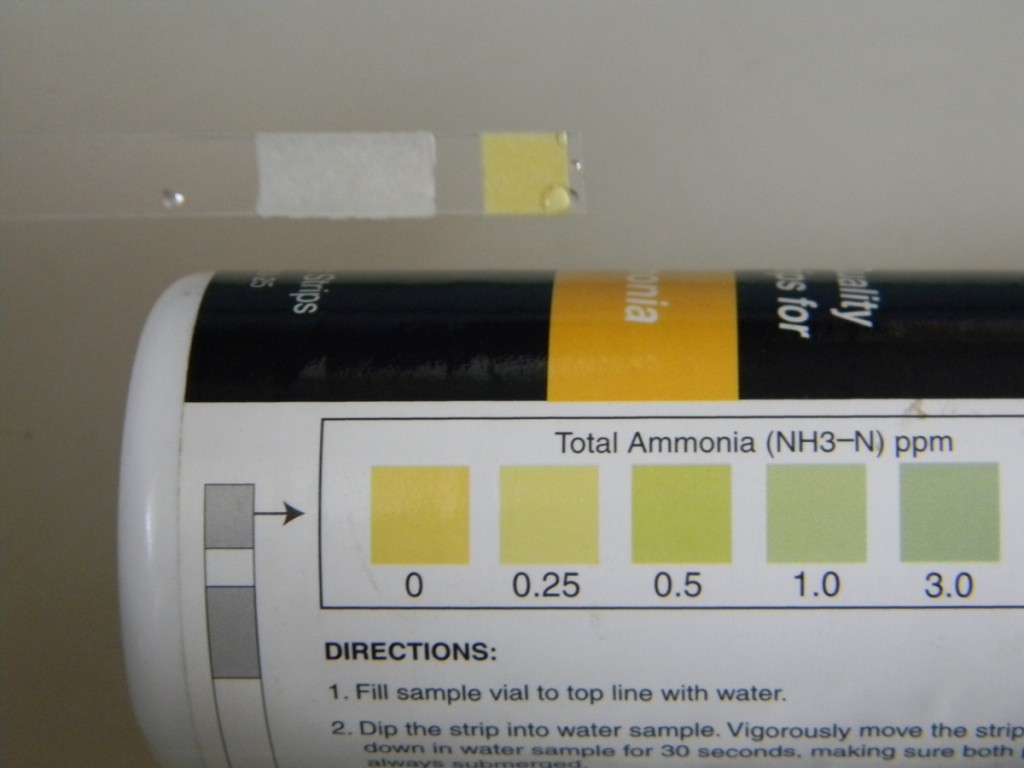
That looks like a big “0” to me! No nitrogen running down the drain!
The phosphorous test is more exciting. It starts with these glass ampules.
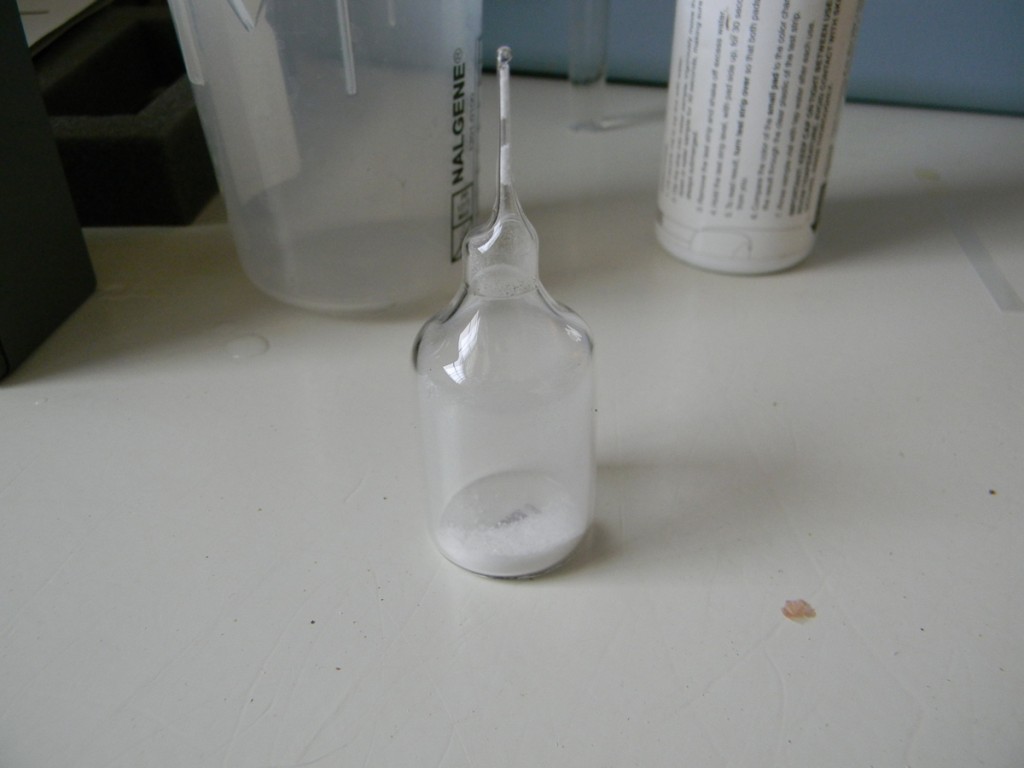
You can see a little white powder in the bottom of the ampule. You fill the beaker behind the ampule with water and then put the ampule in the beaker upside down and press on it to snap the top off. It sucks the water into the ampule and you shake it to dissolve the powder.
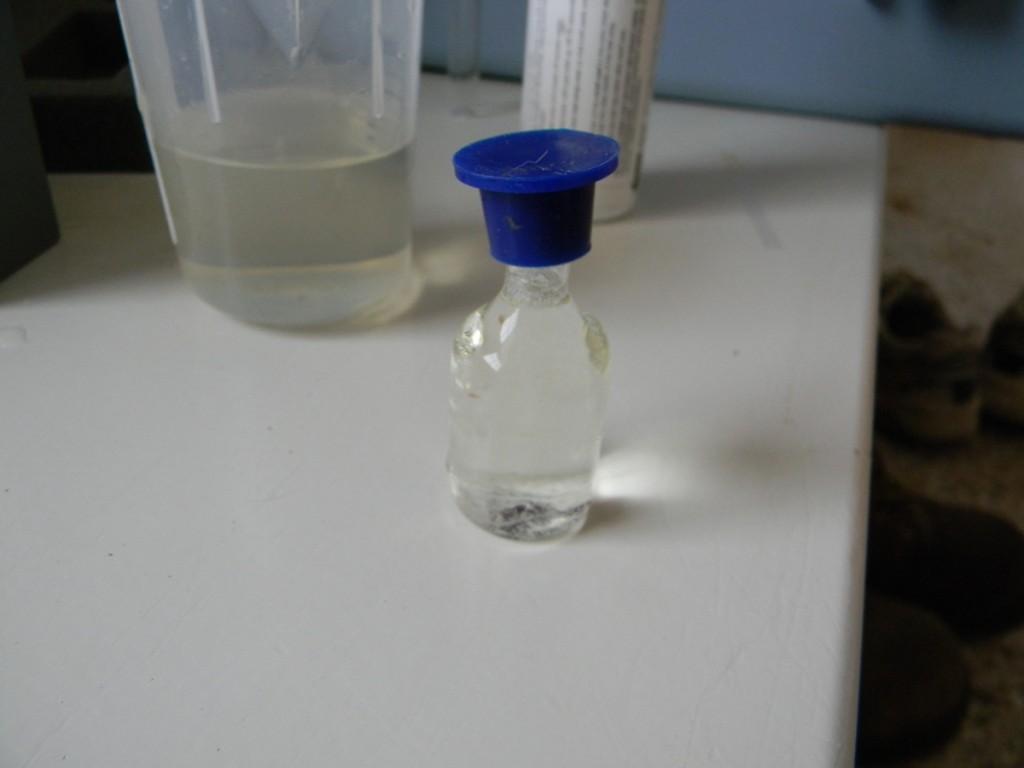
The test kit manufacturer thoughtfully included the blue rubber cap for the ampules. After you snap the top off you’re left with a sharp edge that is perfect for jabbing into the tip of your finger.
You then put the ampule and a reference container of water into this gadget to compare them.
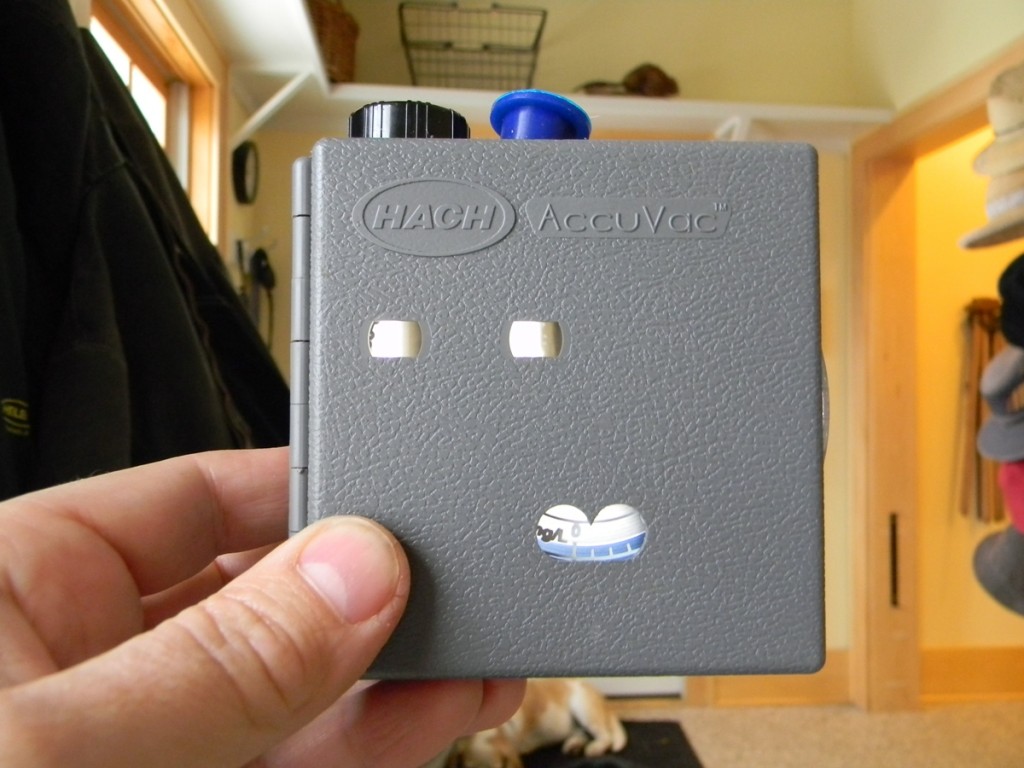
You spin a color wheel until the samples are the same color and then read a number that represents the amount of phosphorous in the water from a scale.
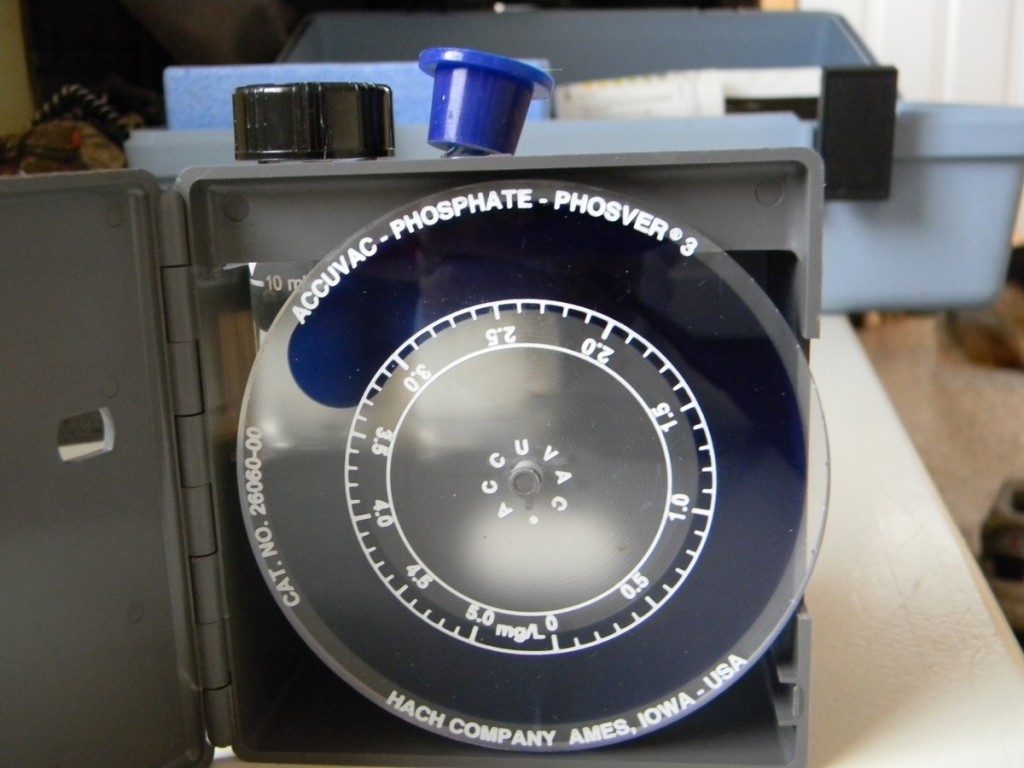
The phosphorous was a “0” too.
Each week that the tiles are running I do this and record the numbers in a spreadsheet, along with the amount of rain we’ve had. If we’ve applied any fertilizer to the field that gets recorded too.
We hope that after we get a big rainfall we don’t see a big spike in the amount of nitrogen or phosphorous in the water. If we do, it’s an indicator that we need to think about what we’re doing and what we can do to prevent losing fertilizer into the water.
1. I.e., “the government.” While there is a vocal group of people who suspect all government activity of being wasteful and intrusive, I think programs to ensure water quality are a wonderful use of my tax dollars.
Leave a Reply